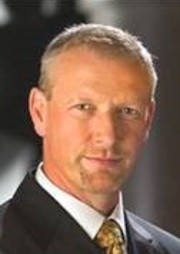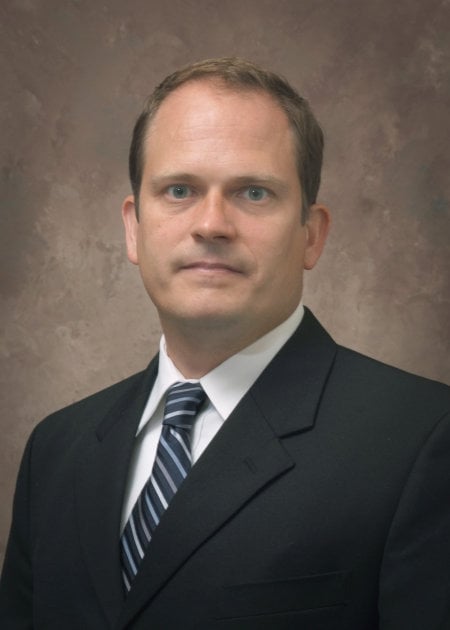Leeham News and Analysis
There's more to real news than a news release.
Leeham News and Analysis
- At long last, Boeing appears near certification and EIS for 777X
- Air India Flight 171 Preliminary Crash Report Is Unclear Regarding Pilot Actions
- Bjorn’s Corner: Air Transport’s route to 2050. Part 30.
- It’s official: MTU’s engine leader named CEO of Airbus Commercial from Jan. 1; future of Open Fan and A220-500 shifts to him
- Embraer E2: Where will the orders come from?
UTC media day 1: UTAS, twice the size of any other aerospace systems company
Note: United Technologies Corp (UTC) is holding its annual Media Days today and tomorrow. We’re providing reporting from the event. This is the first time in our long participation that UTC Aerospace Systems is presenting. UTAS is a major supplier and service provider to all the airframe OEMs.
June 6, 2016: UTC Aerospace Systems is just four years old, following mergers with

Dave Gitlin, CEO of UTC Aerospace Systems (UTAS).
Hamilton Sundstrand and Goodrich–the largest in aerospace history, says Dave Gitlin, president of UTC Aerospace Systems.
UTAS provides electrical power and bleed air systems, engine, starters, power systems, all the circulating fans on the Boeing 787, monitoring systems and much more. Evacuation slides, the Ram Air Turbines, landing gear, flaps and slat control systems, brakes and thrust reversers.
There are 90 product lines supporting 1,500 operators on 70,000 aircraft.
![]() With the global air fleet doubling in 20 years, according to projections from Airbus and Boeing, UTAS will benefit by about $4m worth of parts on each airplane. The content is greater on the new airplanes in development than on the predecessor aircraft.
With the global air fleet doubling in 20 years, according to projections from Airbus and Boeing, UTAS will benefit by about $4m worth of parts on each airplane. The content is greater on the new airplanes in development than on the predecessor aircraft.
There are 160 development programs in process at UTC today.
“We are the lowest risk supplier of choice,” Gitlin said. “We spend $2bn a year on innovation. We are twice as large as any other aerospace systems company.”
UTAS currently has a $240bn forecast for its future supplier needs.
Giltin said the Hubble Telescope, which travels in low orbit at 18,000 miles an hour, uses UTAS parts the width of a dime to maintain camera stability. Space suits used by astronauts are made by UTAS, providing protection from -450F to +450F.
Gitlin said that Boeing’s Partnering for Success has moved to PFS 2.0 because of pressure from the airlines to take cost and waste out of the system. UTAS lost the landing gear contract on the 777 under the PFS 1.0. He said that UTAS worked its way through PFS 1.0 and is looking for opportunities to shave costs in its continuing supplier role to Boeing.
Innovation

Geoff Hunt, vice president of engineering for UTAS.
Geoff Hunt, vice president of engineering, said said that one quarter of the 8,000 UTAS engineers are dedicated to maintaining flexibility to pursue innovation.
Hunt said that main areas of focus beyond incremental engineering are integrated propulsion, electric architectures, intelligent systems, advance materials, advance manufacturing and advanced methods.
Integrated propulsion or high bypass ratio engines needs advances in nacelle drag and weight, fan duct aerodynamic loss, engine heat rejection, accessory packaging and aircraft utility loads.
“You don’t just scale up the nacelle” as fans get larger, he said. It’s necessary to keep the nacelle as small and light as possible. Engine cores get smaller. There is the challenge of packing accessories into the desired smaller spaces.

Tim White, president of Electric Systems, UTAS.
Electric Architecture
Tim White, president of Electric Systems of UTAS, said electric power systems are increasing on commercial and military aircraft. Electric Systems develops power grids for airplanes, among other things, including systems analogous to the home circuit breaker box.
Older aircraft designs like the Boeing 737, Airbus A320 and 777 rely on electric, pneumatic and hydraulics. The new aircraft such as the A350, COMAC C919, Embraer E2, Bombardier C Series and the F-22 fighter use more and more electric systems to reduce or eliminate pneumatics and hydraulics. The Boeing 787 takes electric systems to a new level. UTAS’ Electric Systems supplies all of these aircraft.
White said his company has invested $3bn in electric architect systems.
Share this:
- Click to print (Opens in new window) Print
- Click to email a link to a friend (Opens in new window) Email
- Click to share on X (Opens in new window) X
- Click to share on Pinterest (Opens in new window) Pinterest
- Click to share on Facebook (Opens in new window) Facebook
- Click to share on WhatsApp (Opens in new window) WhatsApp
- Click to share on LinkedIn (Opens in new window) LinkedIn
- Click to share on Tumblr (Opens in new window) Tumblr
- Click to share on Reddit (Opens in new window) Reddit
Related
Category: Airbus, Boeing, Bombardier, Comac, CSeries, Embraer, Pratt & Whitney, United Technologies
Tags: 737, 777, 787, A350, Airbus, Boeing, Bombardier, C Series, C919, Comac, Dave Gitlin, EJet E2, Embraer, Geoff Hunt, Pratt & Whitney, Tim White, United Technologies, UTAS, UTC Aerospace Systems


Hydraulics are still there, its just driven locally by a at the device rather than distributed through tubes from a center (though split) system
As the actuator and hydraulic drive are a single unit it saves all the weight of the central powered hydraulic system.
Wire do add their own weight but easier to route and you need more power to do so (ergo, the 787 has something like 1,250,000 KW of total generators power which is somewhat insane.
To put that in perspective, it takes 2 x 900 hp engines to deliver that same level of power.
Complexity goes way up, its no longer simple when you consider it as an entire system. Cost for that high tech also would be a lot higher.
That doesnt make sense of 787 generating capacity.
Each engine has 2×250 kVA and the APU has 2x225kVA.
Total generating capacity would be 1550kVA but I dont think you can sum up individual generators like that, so would be a bit less.
Thats just a small towed diesel generation set by comparison. Where 1550kVA gives 1240kW.
Sometimes electrical motors replace hydrulics like for brakes on the 787 and T/R actuators for the A350. In industry electrical ballscrew actuators often replace hydraulics and pneumatics. The pneumatic and Hydraulic systems will continue to shrink for each generation of Aircraft. However some redudancy is lost when “Everything” is on the same databus and you have a multitude of solid state transformers. All this makes a major busbar error codes popping up hard to predict
The F-22 is a “new” aircraft??? Its first flight was in 1997, and it’s pre-prototype, the YF-22, first flew in 1990.